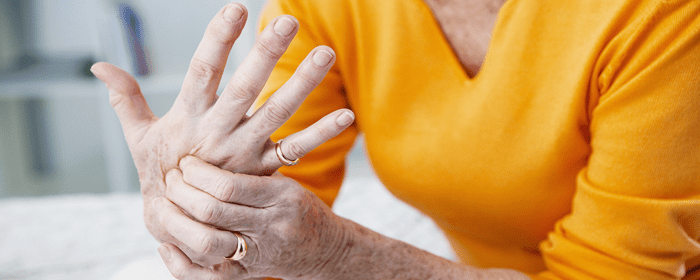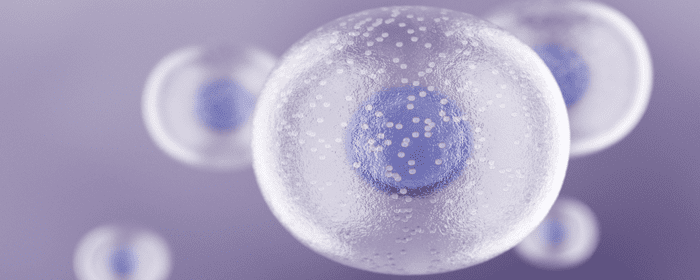
by Stemedix | Apr 3, 2023 | Multiple Sclerosis, Regenerative Medicine, Stem Cell Therapy
Multiple sclerosis (MS) is a chronic and progressive neurological disease that affects the central nervous system (CNS), which includes the brain and spinal cord. MS occurs when the immune system mistakenly attacks the myelin, a fatty material that surrounds and protects nerve fibers, causing inflammation and damage to the myelin and the nerve fibers themselves. Many people often wonder ” Is Multiple Sclerosis hereditary? Keep Reading to find out!
The symptoms of MS can vary widely depending on the location and extent of the damage to the CNS. Common symptoms include fatigue, weakness, balance problems, difficulty walking, numbness or tingling sensations, blurred or double vision, muscle stiffness and spasms, bladder and bowel problems, and cognitive impairment.
How is Multiple Sclerosis Diagnosed?
In general, the diagnosis of MS is made based on a combination of clinical symptoms, physical examination, and diagnostic tests, such as magnetic resonance imaging (MRI) and cerebrospinal fluid analysis. While these tests cannot definitively determine the cause of MS, they can help to identify characteristic patterns of damage in the CNS that are consistent with the disease.
The identifying characteristic patterns of damage in the central nervous system (CNS) for multiple sclerosis (MS) can be seen on magnetic resonance imaging (MRI) scans and include the following:
Multiple lesions: MS typically causes multiple areas of damage, or lesions, in the CNS. These lesions can appear in various regions of the brain and spinal cord and are often visible on MRI scans as bright or dark spots.
White matter damage: MS primarily affects the myelin sheath, which is a fatty substance that surrounds nerve fibers in the white matter of the brain and spinal cord. The damage to the myelin results in the formation of lesions that can be seen on MRI scans.
Inflammation: MS is caused by an abnormal immune response that results in inflammation in the CNS. This inflammation can be seen on MRI scans as areas of increased brightness, indicating increased blood flow and immune cell activity.
Symmetry: MS lesions tend to occur in a symmetric pattern, meaning they appear in similar locations on both sides of the brain or spinal cord.
Time course: MS lesions can appear and disappear over time, and new lesions may develop while old lesions may heal. This pattern of damage over time is a key diagnostic feature of MS.
Overall, the combination of multiple lesions, white matter damage, inflammation, symmetric involvement, and a relapsing and remitting time course seen on MRI scans can help to distinguish MS from other neurological conditions that can cause similar symptoms.
Is Multiple Sclerosis Caused by Heredity or Environmental?
Multiple sclerosis (MS) has a complex etiology and while the cause of MS is not fully understood, research suggests that a combination of genetic and environmental factors may contribute to its development. Currently, there are no definitive tests to determine whether the condition is caused by genetic or environmental factors alone.
People with a family history of MS, certain infections, and vitamin D deficiency are thought to be at increased risk for the disease. Having a close relative with MS, such as a parent or sibling, does increase a person’s risk of developing the disease. However, the risk is still relatively low, with most people with a family history of MS not developing the disease themselves.
While there has been no single gene identified as the cause of the disease responsible for MS and appears to be complex and multifactorial. Genetic testing can be used to identify certain genes that may increase the risk of developing MS but it is not directly inherited in a simple Mendelian fashion, where a single gene is responsible for the disease and follows a predictable pattern of inheritance. Instead, it is believed that multiple genes, each contributing a small effect, interact with environmental factors to increase the risk of developing MS.
Environmental factors, such as exposure to certain infections, smoking, and low vitamin D levels, have also been linked to an increased risk of developing MS. However, it can be challenging to determine the precise environmental factors that contribute to the disease, as many factors may be involved, and their effects may be difficult to measure.
Overall, while genetics can play a role in the development of MS, it is a complex disease with multiple factors contributing to its onset, and more research is needed to fully understand its genetic basis.
Treatments for Multiple Sclerosis
MS is a lifelong disease with no known cure, but there are treatments available to help manage the symptoms and slow the progression of the disease. Traditional medicine may include medications to reduce inflammation and modulate the immune system, physical therapy to improve mobility and balance, occupational therapy to help with activities of daily living. But some are also exploring regenerative medicine.
What is Regenerative Medicine for MS?
Regenerative medicine, also known as stem cell therapy, is an interdisciplinary field that seeks to replace or regenerate damaged or diseased tissues. This new alternative medicine has the potential to help slow down progression and manage symptoms.
Stem cells are undifferentiated cells that can develop into different types of cells in the body. The most common stem cell used in therapy today is the mesenchymal stem cell which can be derived from adipose (fat), umbilical cord, or bone marrow tissues.
In MS, stem cell therapy involves using mesenchymal stem cells (MSCs) to regenerate damaged myelin and nerve fibers in the CNS. These MSCs can modulate the immune response and reduce inflammation, which can help to prevent further damage to the myelin sheath that surrounds and protects neurons. Studies have shown that stem cell therapy can improve neurological function and reduce disease activity in some patients with MS.
While regenerative medicine approaches for MS are still in the early stages of development, they hold great promise for the future treatment of this complex disease. To learn more about Regenerative Medicine and the different options for Multiple Sclerosis ( MS ) contact a care coordinator today at Stemedix!

by admin | Mar 29, 2023 | Spinal Cord Injury, Mesenchymal Stem Cells, Regenerative Medicine, Stem Cell Research, Stem Cell Therapy
The National Institute of Health estimates that nearly 250,000 people in the United States are currently living with a spinal cord injury (SCI). Most often a result of an accident, SCIs typically result in the loss of neurons and axonal damage resulting in the loss of function.
SCIs can be divided into two distinct phases, the initial physical injury and the secondary injury which typically occurs hours to days later. In most cases of SCI, damage to the axonal and tissue damage is caused by compression and/or contusion to the spinal cord. The secondary SCI injury occurs in the hours and days after the initial injury and is characterized by persistent inflammation, glial scar formation, demyelination of surrounding neurons, and death of cells. Over time, research has demonstrated that, in all aspects of secondary injury, the inflammatory response is the major cause and leads to widespread cell damage and lesion expansion.
Recent research has demonstrated that stem cells, including mesenchymal stem cells (MSCs), neural stem/progenitor, and embryonic stem cells, possess anti-inflammatory properties and promote functional recovery after SCI by inducing macrophages M1/M2 phenotype transformation.
In this review, Cheng and He discuss the general feature of macrophages in response to SCI, the phenotype, and function of macrophages in SCI, and the effects of stem cells on macrophage polarization and its role in stem cell-based therapies for SCI.
Macrophages accumulate in and around an SCI and play a very important role in neuroinflammation. Considering that recent research demonstrates the different, but important, contributions M1 and M2 macrophages make toward repairing tissue damage, this process is thought to be a promising therapeutic treatment for controlling the inflammation occurring after initial SCI.
According to this review, there are both positive and negative effects of macrophages on tissue repair and regeneration after an SCI. Interestingly, some studies show that infiltrating macrophages has harmful effects, especially in the early stages of an SCI. On the other hand, studies also indicated that macrophages have beneficial effects on tissue repair. These results included findings indicating that activated macrophages could provide a beneficial microenvironment that is good for the regeneration of sensory axons.
While the exact reason for the opposite effects of macrophages on the pathological process of SCI is not yet known, it’s thought to be because of the different phenotypes of macrophages – M1 (classical activation) and M2 (alternative activation).
Additionally, studies have demonstrated that M2 macrophages are important for efficient remyelination after CNS injury, while M1 macrophages hinder neurogenesis and inhibit neurite outgrowth and induce growth cone collapse of cortical neurons.
Considering these findings, the authors point out that polarization of macrophages to M2 is beneficial – and often preferred to M1- to facilitate the recovery after SCI. These findings have also demonstrated stem cell transplantation to hold tremendous potential for therapeutic uses in the treatment/recovery after SCI.
There is accumulating evidence indicating that the current preference of M2 macrophages compared to M1 macrophages correlates with remission of SCI in cases receiving SCI interventions including anti-inflammatory therapies and stem cells. The authors of this review conclude that while the exact process by which stem cells regulate macrophage polarization has yet to be determined, stem cells can alter macrophage polarization and promote functional recovery postinjury.
Source: “Anti-inflammatory effect of stem cells against spinal cord injury via | JN.” 13 Feb. 2017, https://www.dovepress.com/anti-inflammatory-effect-of-stem-cells-against-spinal-cord-injury-via–peer-reviewed-fulltext-article-JN.

by admin | Mar 22, 2023 | Stem Cell Research, Mesenchymal Stem Cells, Stem Cell Therapy
Currently, it’s estimated that over 1.3 million people in the U.S., and 10 million people around the world, are living with inflammatory bowel disease (IBD). IBD is a chronic and recurrent disease characterized by inflammation of the tissues of the digestive tract[1]. Two specific diseases included under the term IBD include Crohn’s disease (CD) and ulcerative colitis (UC).
While the exact cause of IBD has yet to be determined, research seems to suggest abnormal activation of the immune system, genetic susceptibility, and altered intestinal flora resulting from mucus barrier defects play some type of role in the pathogenesis of this disease. Currently, a complete IBD treatment or cure exists. Recent research has also demonstrated that adults with IBD are more likely to suffer from other chronic conditions, including diabetes, arthritis, lung cancer, and heart disease[2].
Clinical trials using stem cell therapy have demonstrated promising results for the potential treatment of IBD, including long-term remission in some patients.
In this review, Zhang et al. review the upcoming stem cell transplantation methods for clinical application and the results of ongoing clinical trials exploring the use of stem cell transplantation as a potential treatment for IBD.
Specific stem cells, known as hematopoietic stem cells (HSC), have been shown to be particularly effective when used as a therapeutic treatment. HSCs are isolated from blood, bone marrow, and cord blood that migrate directly to damaged mucosal tissues. Initially used in patients with IBD because of other hematologic indications, including leukemia and non-Hodgkin’s lymphoma, the use of HSC therapy (HSCT) demonstrated improvement in intestinal lesions. Further study using HSCT showed that some patients with UC and CD demonstrated sustained clinical and endoscopic improvement. The authors point out that while these limited clinical trials have demonstrated promising results, the observed risk of relapse currently prevents HSCT from being classified as an effective treatment and calls for larger samples and longer-term efficacy observations.
Another stem cell treatment currently being evaluated for the treatment of IBD is the use of mesenchymal stem cells (MSCs). When injected intravenously, MSCs demonstrate the ability to reach the injured area of the intestine, colonize mucosa to control inflammation, improve microcirculation, and repair damaged tissues. A systematic review conducted by Lalu et al. found that the use of MSCs did not show significant side effects and was a relatively safe therapeutic treatment option.
Zhang et al. conclude that the significant advance in stem cell research made over the past twenty years has made them a promising therapeutic option for the treatment of IBD. Although a limited number of clinical trials have confirmed the efficacy of specific stem cells, specifically HSC and MSCs in IBD, the authors point out that the current treatments need to be improved and further research must be conducted in order to fully understand the complexity associated with the condition.
While this review focuses primarily on the use of HSC and MSC, Zhang et al. call for continued preclinical exploration of other cell therapy methods with the goal of improving the quality of life of IBD patients.
Source: “Stem Cell-Based Therapies for Inflammatory Bowel Disease – PMC.” 31 Jul. 2022, https://www.ncbi.nlm.nih.gov/pmc/articles/PMC9368934/.
[1] “Inflammatory bowel disease (IBD) – Symptoms and causes.” https://www.mayoclinic.org/diseases-conditions/inflammatory-bowel-disease/symptoms-causes/syc-20353315.
[2] “People with IBD Have More Chronic Diseases – CDC.” https://www.cdc.gov/ibd/features/IBD-more-chronic-diseases.html.

by admin | Mar 17, 2023 | Mesenchymal Stem Cells, Stem Cell Research, Stem Cell Therapy
An estimated 100 million people in the U.S. have some form of acute or chronic liver disease. Many factors, including viral and bacterial infections, substance abuse, diabetes, and fat deposition, contribute to conditions that harm the liver.
Left untreated, these liver conditions often progress to more serious diseases that often require a liver transplant. Historically, a host of issues – including a low number of tissue donors, a high rate of tissue rejection, medicine-induced immunosuppression, and high associated medical costs – has limited access to, and the effectiveness of, liver transplantation as a viable solution.
Considering the limited options available for the successful treatment of liver disease, identifying alternative treatment options has become very important. Recently, the potential treatment of acute and chronic liver disease using regenerative medicine, also known as stem cell therapy, has garnered an increased amount of attention.
While a number of different types of stem cells have been used to treat liver disease, mesenchymal stem cells (MSCs) have been the most studied and successful in reducing the need for liver transplantation.
MSCs have been used to repair liver tissue through a number of different methods, including co-culturing with HSCs to reduce and prevent the progression of fibrosis and the proliferation of disease-causing cells through the production and secretion of specific inflammatory factors.
Treatment of liver disease with MSCs has also been shown to increase endothelial precursor cell proliferation while suppressing apoptosis in LSECs and hepatocytes, and by lowering serum transaminase enzyme levels. MSCs have also been shown to compensate for hepatocyte reduction resulting through liver-disease induced apoptosis by differentiating into hepatocyte-like cells.
Considering the observed role of MSCs in liver tissue repair and regeneration, Hazrati et al concluded that the use of MSCs induces the repair and regeneration of liver tissue through immune response modulation, differentiation into HLCs, increased proliferation and decreased apoptosis in hepatocytes, increased apoptosis and reduced function of HSCs and improve the function of LSECs.
The authors also point out that, as of publication, there were 61 active clinical trials using MSCs to treat a variety of liver-related diseases, including cirrhosis, fibrosis, and liver failure. The associated advantages of MSCs in the treatment of acute and chronic inflammatory liver disease include ease of isolation and culture, pluripotency, immunomodulatory and anti-inflammatory properties, extracellular signaling, and their ability to differentiate.
The authors conclude this review by summarizing the observed benefits of using MSCs, and specifically MSC-EVs to improve liver function and support the repair of damaged liver tissue. The authors also point out that while there have been numerous clinical trials using MSCs to treat liver disease, there have been no clinical trials performed on the use of MSC-EVs and call for additional research to investigate the long-term effects of treating liver disease with MSC-EVs.
Source: “Mesenchymal Stromal/Stem Cells and Their Extracellular Vesicles ….” https://www.frontiersin.org/articles/10.3389/fimmu.2022.865888/full.

by admin | Mar 15, 2023 | Health Awareness, Osteoarthritis, Regenerative Medicine, Stem Cell Therapy
The Centers for Disease Control and Prevention states that 25% of all adults in the United States suffer from arthritis. Arthritis can be a debilitating condition that affects many areas of the body. One of the most common locations for arthritis, however, is the hands. If you have hand arthritis, there are some things you can do to find relief.
Medications
Many medications have been developed to reduce the symptoms of arthritis and allow you to use your hands with less pain or no pain. The right medications can help reduce swelling as well as joint discomfort.
Some common arthritis medications include:
- Acetaminophen
- Corticosteroids
- Nonsteroidal anti-inflammatory drugs
- Immunosuppressive drugs
While medications cannot stop the progression of the disease, they can help manage the symptoms and improve your quality of life.
Regenerative Medicine
Regenerative medicine, also known as stem cell therapy, uses stem cells to promote your body’s natural healing process. These cells target the affected joints, reducing inflammation, pain, and aching. Stem cell therapy can also increase joint flexibility and help with the regeneration of new cartilage.
Management Strategies
Physical exercises for your hands can help you regain some mobility in your joints. You can also turn to hot and cold packs. Cold packs reduce swelling and pain, and hot packs protect against stiffness. You also need to consider regular rest periods since rest can help reduce swelling.
If you smoke, quitting can also help reduce the symptoms of arthritis, as can losing weight if you are overweight or have diabetes.
Arthritis Help Is Available
You do not have to suffer through painful hand arthritis when there are treatments available that do not rely only on surgical procedures. With management strategies like hand exercises, as well as with medication and emerging treatments like stem cell therapy, you can get the relief you need.

by admin | Mar 1, 2023 | Mesenchymal Stem Cells, Stem Cell Research, Stem Cell Therapy
Osteoporosis is a common bone disease that occurs as a result of the body’s inability to create new bone as fast as the body is losing bone. Characterized by progressively weakened bones and decreased bone density over time, osteoporosis often results in fractures of the wrist, hip, or spine.
Currently, it is estimated that 10 million Americans have osteoporosis and an additional 44 million have low bone density considered significant enough to increase the risk of developing osteoporosis. Recent studies indicate that roughly 50% of women and 25% of men over the age of 50 will break a bone as a result of osteoporosis[1].
While traditional methods of managing osteoporosis include medication, regular participation in weight-bearing exercises, and eating a healthy diet, the condition cannot be cured through these current approaches. Recently, regenerative medicine, also known as stem cell therapy, has drawn attention as a potential new approach to regenerate bone tissue and as a way to treat osteoporosis.
Specific stem cells, known as mesenchymal stem cells (MSCs), are widely considered to be the most promising of all stem cells for regenerative applications – primarily because of their anti-inflammatory, immune-privileged potential and less ethical concerns than other forms of stem cells.
In this review, Arjmand et al. consider all the currently known effects of stem cell-based therapies, including MSC-based therapy, in the treatment of osteoporosis. Several studies have confirmed the relationship between osteoporosis and a clear reduction in endogenous MSCs’ ability to proliferate, differentiate, and ultimately form new bone. Considering this, MSCs have been the most common type of stem cell investigated for the treatment of osteoporosis in both animal models and humans.
The authors point out several advantages of using MSCs in clinical models, including their accessibility and ease of harvesting, immunosuppressive outcomes, and ability to differentiate. Arjmand et al also highlight evidence that indicates MSCs to be effective in this application most likely as a result of their paracrine effects and their supporting regenerative microenvironment ability and not solely a result of their ability to differentiate. Considering these observed paracrine effects, the authors believe MSC transplantation could open a host of new opportunities for the treatment of osteoporosis.
This review concludes by calling for further studies into stem cell therapy as a potential treatment for osteoporosis specifically to understand the outcome and biodistribution of MSCs after transplantation and to further identify important bone loss signaling pathways and genes specific to each individual.
Source: “Prospect of Stem Cell Therapy and Regenerative Medicine in … – NCBI.” 3 Jul. 2020, https://www.ncbi.nlm.nih.gov/pmc/articles/PMC7347755/.
[1] “Learn What Osteoporosis Is and What It’s Caused by.” https://www.bonehealthandosteoporosis.org/patients/what-is-osteoporosis/. Accessed 1 Feb. 2023.







 St. Petersburg, Florida
St. Petersburg, Florida
